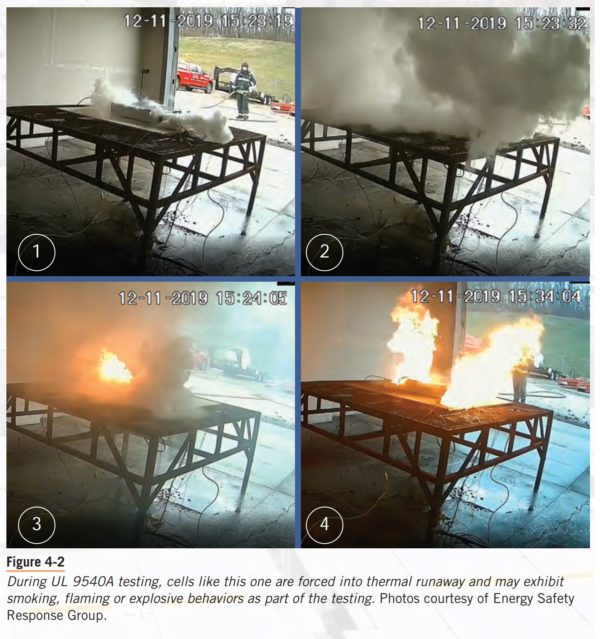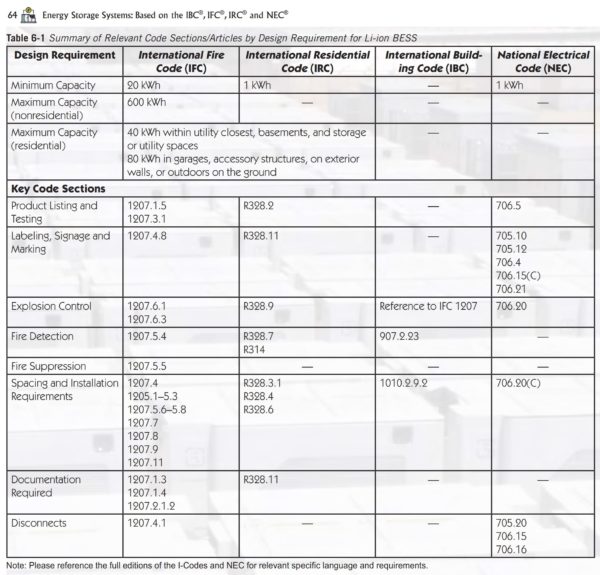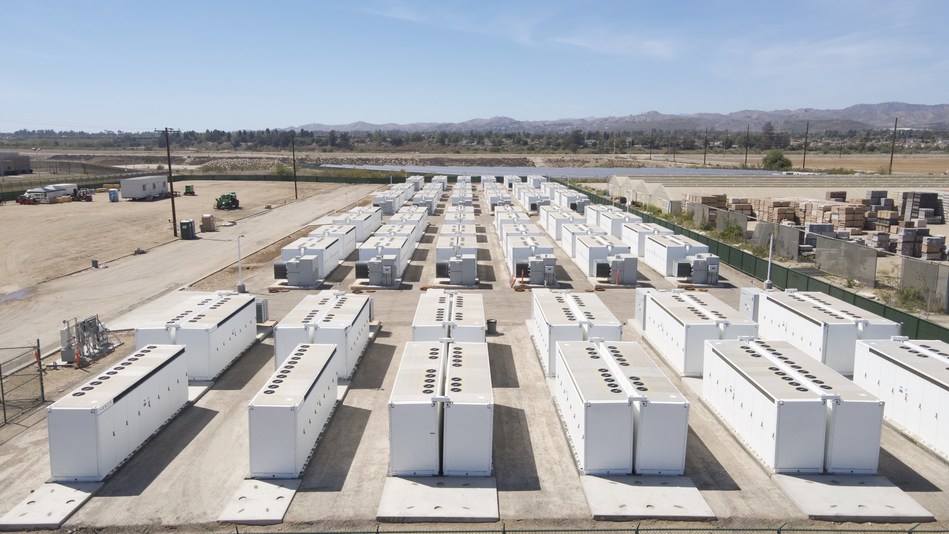From pv magazine USA
The International Code Council, along with the Interstate Renewable Energy Council (IREC) have released an energy storage handbook – the Energy Storage Systems Guide. The document can be found in the Clean Energy Clearinghouse’s Training for Safety Officials series.
The guide is meant to serve as a high level, non-technical, training reference for fire and explosion risks, providing key standards for equipment and installations (along with the applicable hardware codes), and describing inspection techniques for energy storage systems.
Battery stress testing

Chapter 4, Fire & Explosion Risk in Lithium-Ion Battery Energy Storage Systems, describes how fire events develop, including a breakdown of the 2019 APS battery fire in Arizona. The chapter discusses fire and explosion risk mitigation techniques that are integrated at the multiple levels of battery construction. It also discusses the tools and safeguards integrated into the battery systems, such as smoke, flame, and gas detectors, fire control panels, and fire suppression systems.
The guide lists 24 unique battery standards. While all of these standards are necessary, five of the standards are described as “most relevant and applicable for the majority of modern ESS applications”, including NFPA 855, UL 9540, UL 9540A, NFPA 68/69, and IEC 62933.
The handbook also includes a table of the applicable sections of various installation code books, including the International Fire Code, the International Residential code, the International Building Code, and the National Electrical Code. Of course, not all codes are applicable to all projects.

The handbook ends with a series of checklists, and the “Basis of Requirement” that drives the actions in the checklists. For instance, the first item in the “Document Submittal Checklist” is the Commissioning Plan – whose Basis of Requirements is the IFC 1207.1.3. The other checklists are the “Utility-Scale BESS Enclosure Inspection Checklist”, the “UL 9540A 4th Edition Unit Level Report Checklist”, and the “Residential or Small Commercial Packaged BESS Inspection Checklist.”
In IREC’s 2021 Solar Jobs Census, the 255,037 jobs that were primarily focused on solar energy in solar power companies were complemented by another 21,910 jobs focused specifically on installing battery storage. The addition of battery storage jobs outside of the solar industry, for example, in the automotive industry – increases the number of battery storage jobs to nearly 70,000.
Headlines like “US grid-scale energy storage installations quadruple” are already becoming the norm. Since the IRA now provides 30% tax credit for standalone energy storage, these job numbers can be expected to continue growing.
This content is protected by copyright and may not be reused. If you want to cooperate with us and would like to reuse some of our content, please contact: editors@pv-magazine.com.








By submitting this form you agree to pv magazine using your data for the purposes of publishing your comment.
Your personal data will only be disclosed or otherwise transmitted to third parties for the purposes of spam filtering or if this is necessary for technical maintenance of the website. Any other transfer to third parties will not take place unless this is justified on the basis of applicable data protection regulations or if pv magazine is legally obliged to do so.
You may revoke this consent at any time with effect for the future, in which case your personal data will be deleted immediately. Otherwise, your data will be deleted if pv magazine has processed your request or the purpose of data storage is fulfilled.
Further information on data privacy can be found in our Data Protection Policy.